How to Grow Chili Peppers for Beginners
If you are a gardener, lover of salsa, or just spicey food in general, then this article on how to grow chili peppers for beginners will walk you through each step you need to fill your kitchen with more amazing produce.
I am not a fan of spicy but my family, on the other hand, well they can’t get enough. Hot sauce is more popular than ketchup in our house, making it a staple at every dinner, no matter what it is. Add spice to your gardening 101 must grow list of veggies this summer.
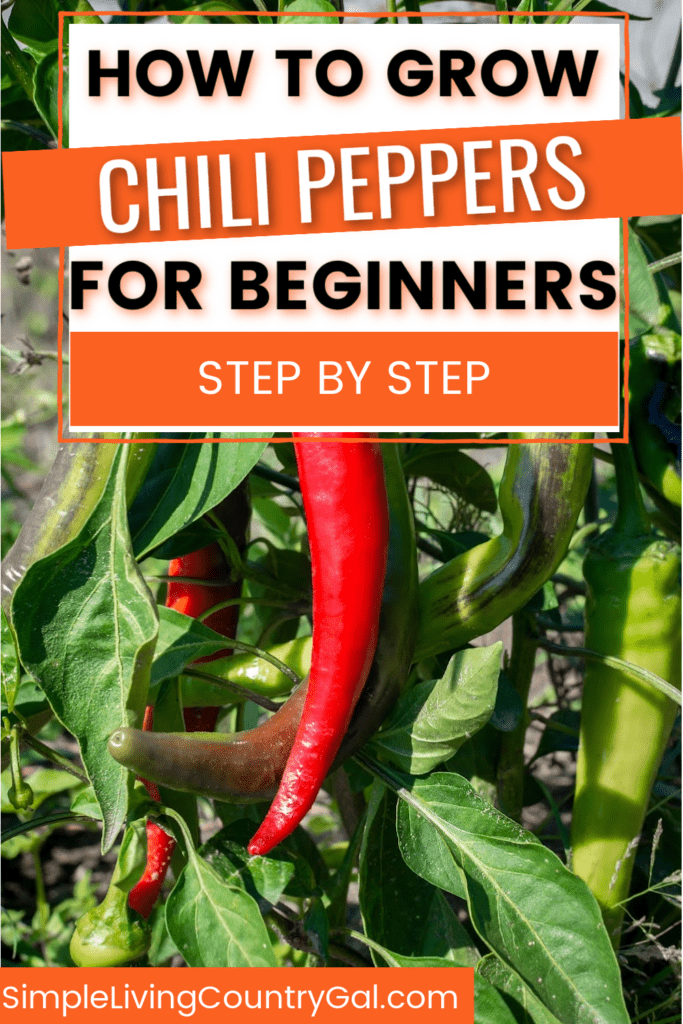
And my family is not alone in this love for hot things; that is why peppers are being grown and more backyard gardens than ever before.
Another common addition is chili peppers. Once grown for hot sauces and various ethnic dishes, they are seen in many home gardens. Some are spicier, and some are slightly sweeter; making them a perfect addition to your favorite recipes. As an added bonus, they can add some wonderful bright colors to your garden.
Chili peppers aren’t hard to grow, making them a perfect addition to a new garden. They’ll produce a large harvest, and that means just a few plants are all you need. Their spice may be too much for some people yet not spicy enough for others, but you can add more or less chili pepper to your dishes to suit your taste.
While commonly thought of as a vegetable, all peppers, including chili peppers, are actually fruits. Fruits are classified as having seeds and growing from a flower, which peppers do.
Chili Pepper Varieties:
- Cayenne – long and thin peppers with a medium to high level of spiciness
- Jalapeno – short, tapered peppers with a medium to high level of spiciness
- Tabasco – short, pointy peppers with a medium to high level of spiciness
- Anaheium – long, tapered peppers with a mild to medium level of spiciness
- Habanero – short and squat peppers with a high level of spiciness
- Ghost Peppers – short and squat with an extremely high level of spiciness
- Demon Red – dwarf variety perfect for container and windowsill gardens with an extremely high level of spiciness
Should I plant a seed, Bulb, or Plant?
Chili peppers start with a seed and can be started indoors before the garden soil is ready or sown directly into the garden. What you plant depends on where you live and the length of your growing season. Pepper seedlings, young plants, transplant amazingly well and give you a nice jump start to your growing season.
How to Grow Chili Peppers for Beginners
Chili peppers will need to be started in warm soil of at least 50° F and after the season’s last frost. Cold weather and soil can keep the plants from producing flowers which will delay the growth of the peppers.
If you live in an area with a short warm season, consider starting your plants indoors or purchasing seedlings. The earlier the seeds are sown, the more time the plants will have to produce healthy fruits.
You will also need to be prepared to mix in organic compost into your garden soil when planting to help create more fertile soil for the plants.
When to Plant Chili Peppers
When to plant depends on your region. For outdoor planting, the soil and air temperature need to be at least 50° F with no chance of frost. For many regions, that usually means mid to late April.
If starting your seeds indoors, start them at least 6 to 8 weeks before the last frost of the season. They’ll be ready to plant in the garden as soon as the temperatures warm up and the threat of frost has passed. January and February are the perfect months to start your seeds indoors.
The hottest varieties will need the longest growing period, so if you’re planning to grow peppers with a high level of spiciness, you’ll need to start them early.
SLCG PRO TIP: Start a journal of times, dates, and other planting tips for everything you plant in your backyard garden. This will help you to become not only more efficient in your garden but more successful as well.
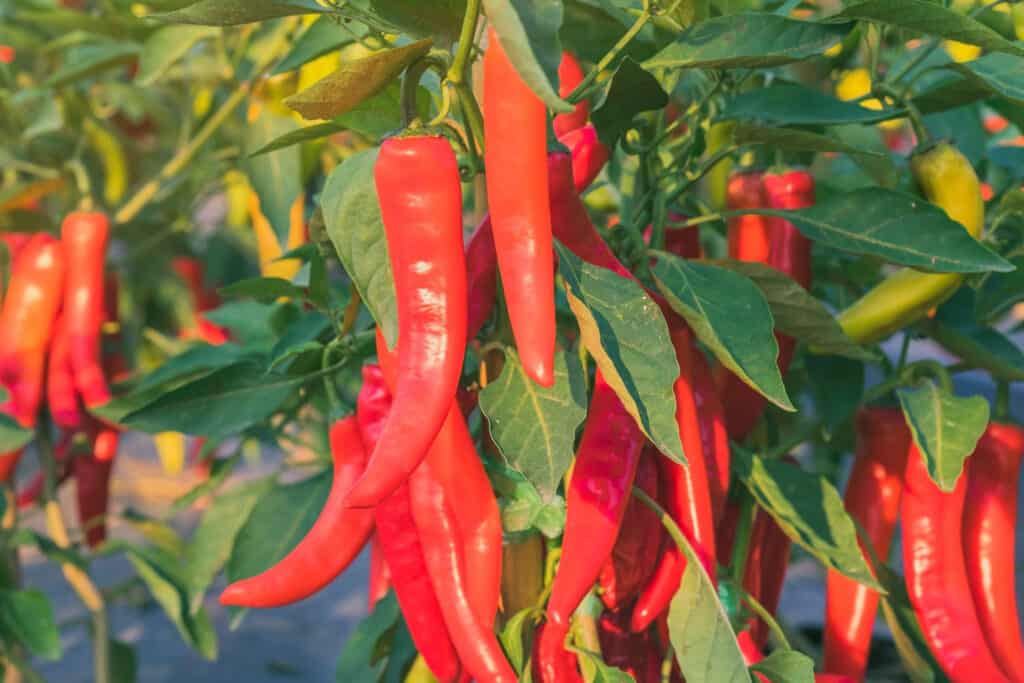
Temperature
Chili peppers are a warm-weather fruit and need temperatures of both soil and air to be above 50° F to grow, but ideally, they prefer temperatures that are hot, 80-85° F.
Sun
You’ll want to choose a spot in your garden that receives plenty of sunlight, at least 6-8 hours a day. If starting your seedlings indoors, you’ll want to provide 6-8 hours per day under a grow light to simulate the sun’s light.
Soil
When planting indoors use a good seed starting mix for your starters. They’ll be ready to transplant when the outdoor temperatures warm up and the plants are large enough to handle without damaging them.
When transplanting or growing directly in the ground, be sure to mix some organic compost into the soil to provide nutrients to the plants.
Chili peppers prefer well-draining soil so the plants stay moist but don’t receive an overwatering.
Water
It’s important to water your seedlings immediately upon planting and to water your transplants immediately after planting in your garden. This will help the seeds to germinate and the roots take hold.
Chili pepper plants will need regular watering throughout the season, approximately 1-2 inches per week and more if the temperatures are hotter. It’s best to check the soil by sticking your finger up to your first knuckle. If the soil is dry, it’s time to water.
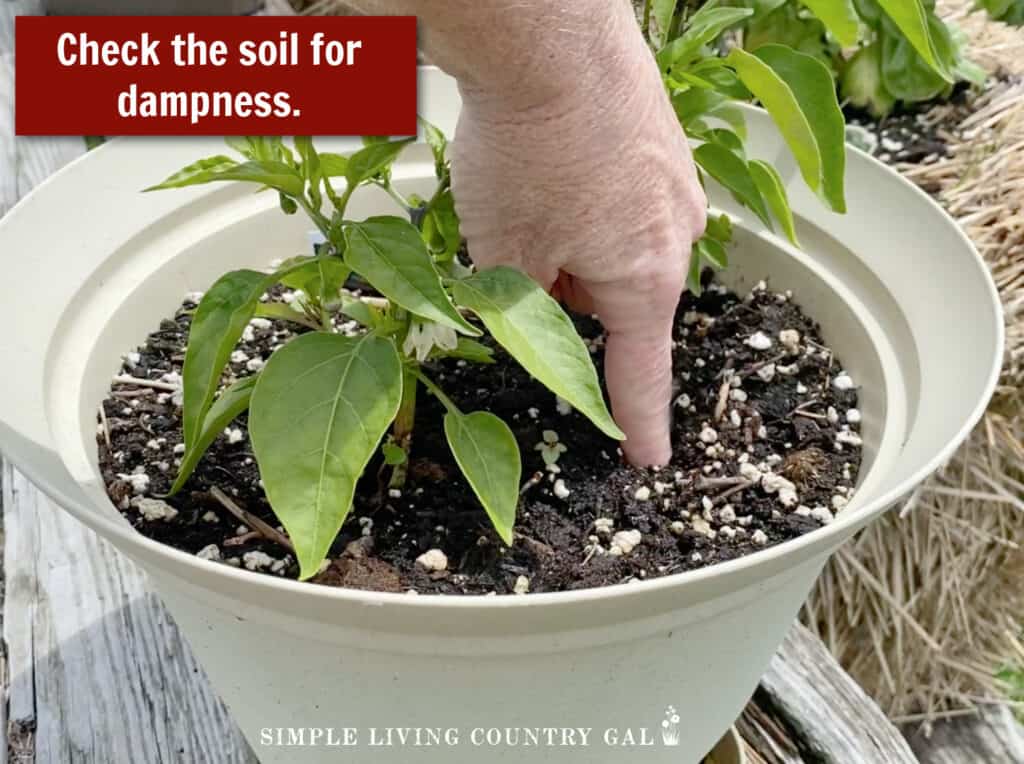
Water evenly being sure not to drench the plants; give the soil time to absorb the water. Overwatering can drown the plants and cause root rot. Keep in mind the plants will need more water as they germinate and a little less when they start to grow.
Fertilizing
Your plants will need to be fertilized in order to grow the healthiest peppers with the largest possible harvest. Well-rotted compost and manure work really well. Another option is a commercially produced tomato fertilizer; yes, it will work for chili peppers too.
Look for a 5-10-10 fertilizer and work some of it into the soil before transplanting your seedlings to the garden. Plan on about 3 pounds of fertilizer per 100 square feet of soil.
Support
While chili pepper plants don’t require staking, it does have its benefits. The plants can become heavy with fruits, allowing the peppers to droop closer to the ground where they’re more susceptible to pests and rotting.
Staking the plants helps to keep them fully upright with the peppers up and off the ground. It also helps to reduce scalding from the sun.
How Much to Plant
Chili pepper plants produce a nice size harvest, and since the fruit is usually very spicy and not something you’ll use in your kitchen daily, 1 to 2 plants per heat-loving person is enough to provide a good harvest.
Most chili pepper plants will produce anywhere from 20-50 peppers per plant. They do freeze well, allowing you to stick your freezer with peppers to use all year long.
Read: The Best Way to Freeze Peppers
How Long Do Chili Peppers Take to Grow?
The amount of time it takes chili peppers to grow depends on the variety, but most are ready to harvest in 60-150 days. Starting your plants indoors and moving them outside to the garden once the temperatures warm up. This will allow you to harvest the peppers earlier in the season.
Seeds can be started indoors 8-10 weeks before being transplanted. Be sure to check the growing guide on the seed packet for the specific variety of chili pepper you choose.
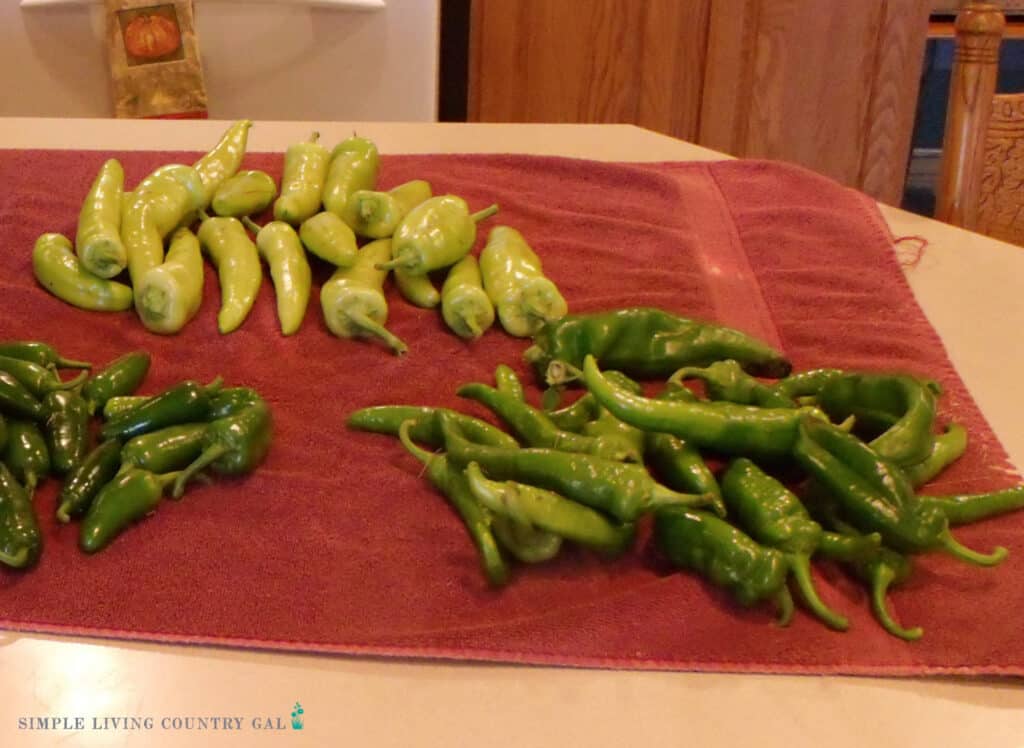
How to Plant Chili Peppers
To allow for the longest growing season possible, it’s best to start your chili pepper plants indoors and then move them to your garden once the temperatures warm up. They can be planted indoors 8-10 weeks before the season’s last frost and then transplanted in the garden.
Seeds should be planted about a ¼ inch deep both when starting indoors or starting directly in the garden. If growing indoors, plant in small seedling starters or seedling pots using a good quality topsoil. When moving them outdoors, prepare the soil by mixing in organic compost. Plant the transplanted plants to the base of the plant so that all roots are in the soil.
Plants should be approximately 18 to 36 inches apart, about 2 to 3 feet between the rows. This will give them plenty of room to grow.
Once planted, give the seeds an even watering and regularly water while germinating. Don’t allow the soil to dry out while also being careful not to overwater and drown the plants. The soil should be slightly damp.
Once transplanted, keep the plants regularly watered until flowers start to appear and when the temperature is excessively hot. Check the soil daily to see if they need watering.
Once the peppers begin to appear, fertilize the soil one more time using a tomato fertilizer, manure, or compost.
Most pepper plants will be ready to harvest in 60-150 days; check the grow season guide on the seed packet of the variety you choose.
Spacing
Chili pepper plants should be spaced about 18 to 36 inches apart with about 2 to 3 feet between rows. The plants will grow to approximately 3 feet tall.
Depth
Whether planting outdoors or starting seedlings indoors, seeds should be planted about a ¼ inch deep.
Growing Tips for Chili Peppers
· Once you have started growing chili peppers, you can save the seeds from a few peppers to replant the following year instead of purchasing new seeds each year.
· Chili pepper plants can be grown all year long indoors. Once the season is over and the temperatures start to cool, you can transplant the plants again and bring them indoors over the winter. They’ll only last one season outdoors, but many gardeners report having chili pepper plants for 2-3 years when they bring them indoors in winter.
· Be careful not to overwater. Chili pepper plants love water and need a steady supply, but they won’t do well if they become oversaturated. The roots will become waterlogged.
· Use soil that retains moisture while also being well-draining to prevent the plants from becoming overwatered.
· A layer of mulch on top of the soil will help the soil retain more moisture on hot days by preventing evaporation.
· Overwatering can lead to a variety of diseases and problems with growth.
· Over-fertilizing can be a problem too. A good 5-10-10 fertilizer is sufficient and can be worked into the soil when transplanting seedlings and again once the peppers start to form, but too much fertilizer can hinder the production of the fruit.
· Pinch plants for bushier plants. When the peppers are about 6 inches tall, clip the growing tip to create a bushier plant and remove any flowers that appear early as they can dimmish the energy directed toward the plant.
How to Harvest Chili Peppers
Picking chili peppers will encourage more to grow to be sure to harvest regularly as the fruits are ready. Pinch the peppers off where the stem meets the plant, being careful not to damage the plant itself.
Pick a few when you are ready to use them, and leave others on the plant a little longer to develop more color and flavor. Green peppers will have a milder flavor and as they start to turn red, they’ll become hotter.
How to Store Chili Peppers
If you’re using the chili peppers within a few days to a week, they can be stored at room temperature. Chili peppers can also be dried or frozen for longer storage.
To dry chili peppers, use a needle and thread to gather the peppers together at the stem and attach them to twine so they form a “daisy chain” on the twine. Hang them in a warm and well-ventilated area and allow them to dry for about 4 to 5 weeks, then store them in an airtight container until you’re ready to use.
To freeze them, place the peppers in a freezer bag immediately after picking without washing or preparing them in any way and place them in the freezer. Once defrosted, the flesh will be slightly softened, but the peppers will be just as tasty as the day you picked them.
Diseases and Pests to Watch Out For
Like other fruits and vegetables in your garden, chili peppers are susceptible to some pests and diseases. A few to watch out for include:
· Blossom end rot – this is caused by the calcium levels being too low, usually as a result of irregular watering and high temperatures.
· Root knot – this happens when the roots become knotted together which can lead to a deficiency in nutrition and wilting of the plants.
· Various pests – aphids, thrips, leafhoppers, and whiteflies are attracted to chili pepper plants. They will eat the plants and leaves, spreading viruses and causing damage. If you notice pests, remove them as quickly as possible. If a plant becomes too heavily infected, it’s best to remove the entire plant from the garden.
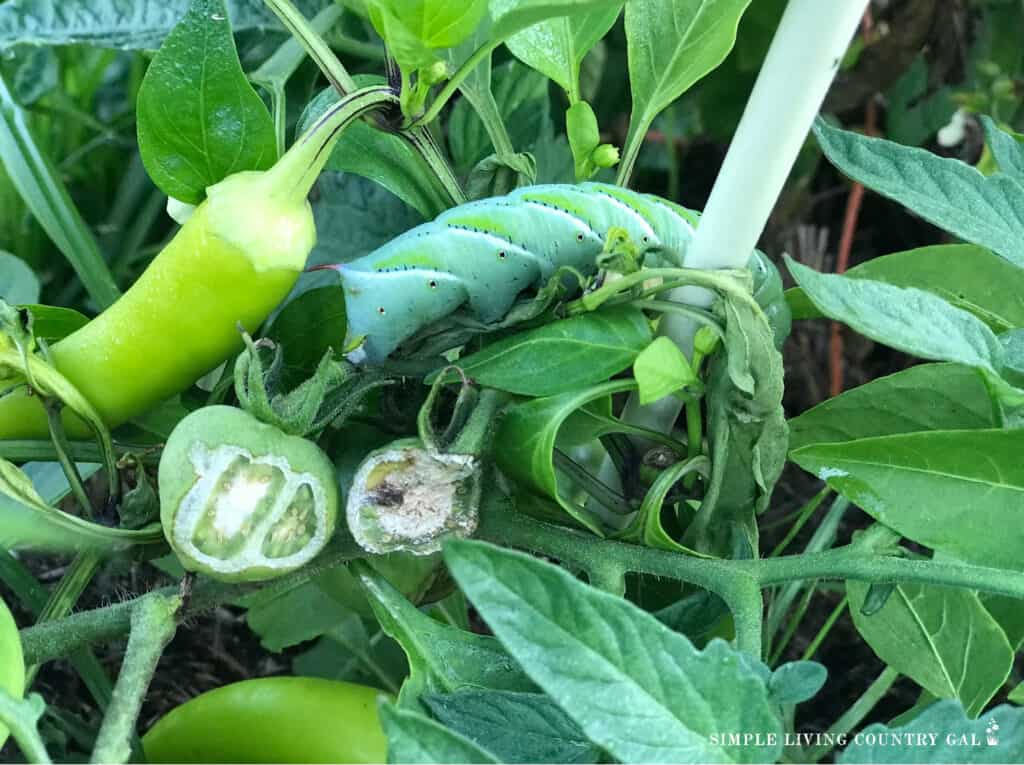
Chili peppers can be a nice addition to any garden, helping you to spice up your favorite recipes easily. Since the plants produce so many peppers and they’re easy to store for a long period of time, you can enjoy the hot and spicy gems all year long.
